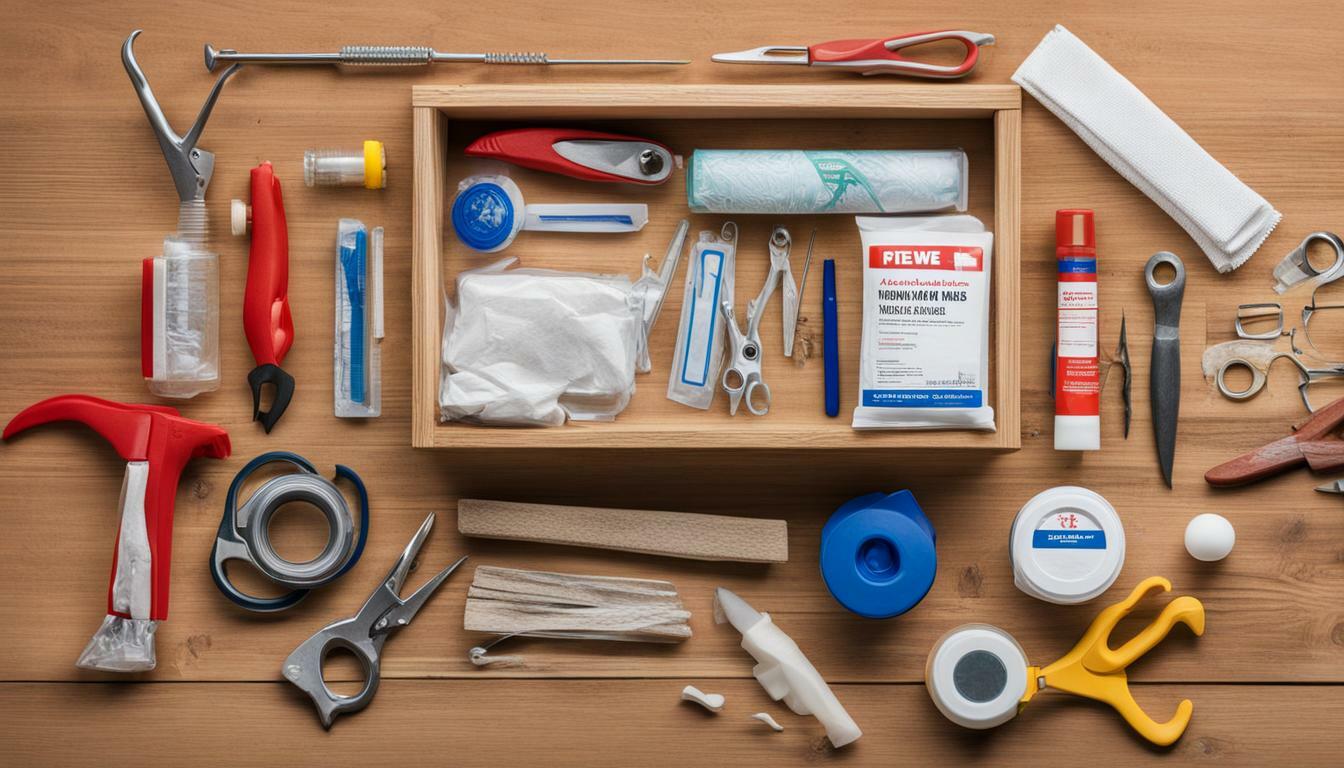Undertaking home renovations and DIY projects can be both exciting and rewarding. However, it is essential to prioritize safety and ensure emergency preparedness throughout the process. Accidents can happen, and having a well-stocked first aid kit can make all the difference.
In this article, we will discuss the importance of home safety when undertaking DIY projects and home renovations. We will provide tips for creating a safe working environment and cover essential first aid supplies needed for emergencies. We will also go over basic first aid techniques for handling common injuries that may occur during DIY projects.
Key Takeaways:
- Undertaking home renovations and DIY projects requires prioritizing safety and emergency preparedness.
- A comprehensive first aid kit with necessary supplies is essential for handling emergencies during DIY projects.
- Creating a safe working environment and having a knowledge of basic first aid techniques can minimize the risk of accidents during home renovations.
The Importance of Home Safety in DIY Projects
Home safety should always be a top priority when it comes to DIY projects. While these projects can be fun and rewarding, they also come with their own set of risks and hazards. It’s essential to take the necessary precautions to prevent injuries and accidents from occurring.
Injury prevention should be the primary goal in any DIY project. It’s important to take the time to assess the risks involved and plan accordingly. This includes having the necessary safety equipment, such as gloves, helmets, and safety glasses, readily available.
When working on DIY projects, it’s also important to be mindful of your surroundings. Keep your workspace clean and free of clutter to prevent tripping hazards. Maintain proper lighting to avoid accidents and eye strain. Additionally, make sure to secure loose objects and cover any sharp edges or corners.
One of the most crucial aspects of home safety in DIY projects is having a well-stocked first aid kit on hand. Accidents do happen, and it’s essential to be prepared in case of an emergency. Your first aid kit should include essential items such as bandages, gauze, antiseptic wipes, and pain relievers. Additionally, it’s recommended to have a first aid manual on hand for quick reference.
Remember, taking the necessary safety precautions is crucial to injury prevention in DIY projects. By prioritizing home safety, you can ensure a successful and accident-free project.

Building Your First Aid Kit for DIY Projects
When it comes to DIY projects at home, having a well-stocked first aid kit is crucial. Accidents can happen at any time, and having the necessary supplies readily available can make all the difference in preventing further injury or complications. Here are some essential first aid supplies to consider including in your DIY first aid kit:
| Item | Purpose |
|---|---|
| Adhesive bandages | for covering minor cuts and scrapes |
| Gauze pads and adhesive tape | for larger wounds and to secure dressings |
| Sterile saline solution | for cleaning wounds |
| Tweezers | for removing splinters and debris |
| Scissors | for cutting tape and gauze |
| Instant cold packs | for reducing swelling and pain |
| Disposable gloves | for protecting against infection |
| Antihistamine tablets | for treating allergic reactions |
It’s important to regularly check and replace expired supplies in your first aid kit to ensure they are effective when needed. Additionally, consider adding any necessary medications specific to your household’s needs, such as asthma inhalers or EpiPens.
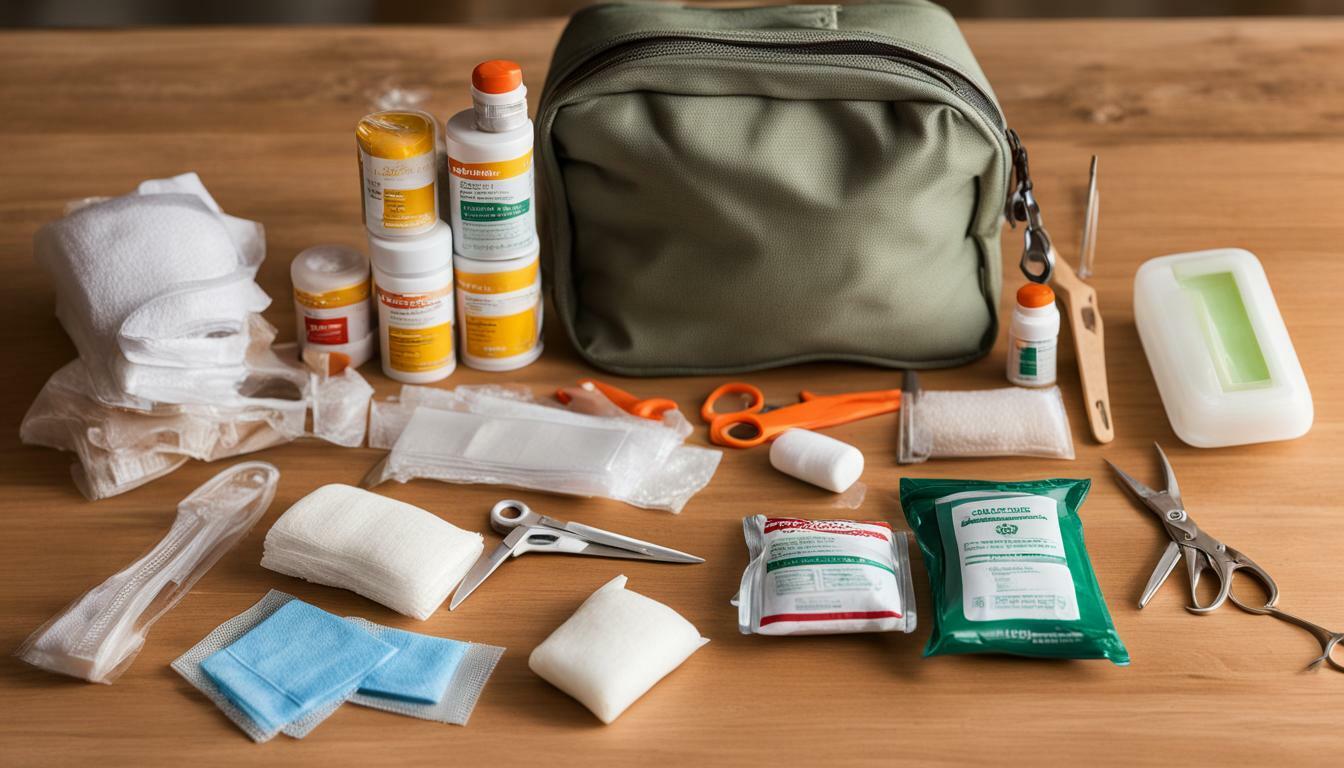
By being prepared with a well-stocked first aid kit, you can ensure that you will be able to handle any minor injuries that may occur during your DIY projects. Remember, safety should always be a top priority when working on home renovations, and having a DIY first aid kit on hand is a crucial part of injury prevention and DIY safety.
Basic First Aid Techniques for DIY Accidents
Accidents are a potential risk when carrying out any DIY project, which is why it’s essential to have a first aid kit readily available and know basic first aid techniques. Being a first responder in a DIY accident can prevent injuries from escalating and minimize the risk of long-term damage.
Injuries such as cuts, burns, sprains, and minor fractures are common in DIY accidents. Here are some basic first aid techniques to help you manage such injuries:
- Cuts and scrapes: Clean the wound with soap and water and cover with a sterile dressing to prevent infection. Apply pressure to control bleeding.
- Burns: Hold the affected area under cool running water for at least 10 minutes or until the pain subsides. Cover with a sterile dressing to avoid infection. Seek medical help if the burn is extensive or affects the face, hands, or feet.
- Sprains and strains: Rest the affected limb and apply ice to reduce swelling. Compress the area with an elastic bandage and elevate the limb. Seek medical help if the pain is severe or if you can’t bear weight on the affected limb.
- Fractures: Immobilize the affected limb using a splint or sling. Seek professional medical help immediately.
It’s important to constantly assess the injured person’s condition and know when it’s necessary to seek professional medical help. Call for an ambulance if there’s severe bleeding, chest pain, or difficulty breathing. It’s also advisable to have a basic first aid manual on hand or enroll in a first aid course to refresh your knowledge.
Remember, preventing injuries should always be a priority when carrying out DIY projects, but accidents can happen. Knowing basic first aid techniques can make a significant difference in minimizing the potential damage from accidents.
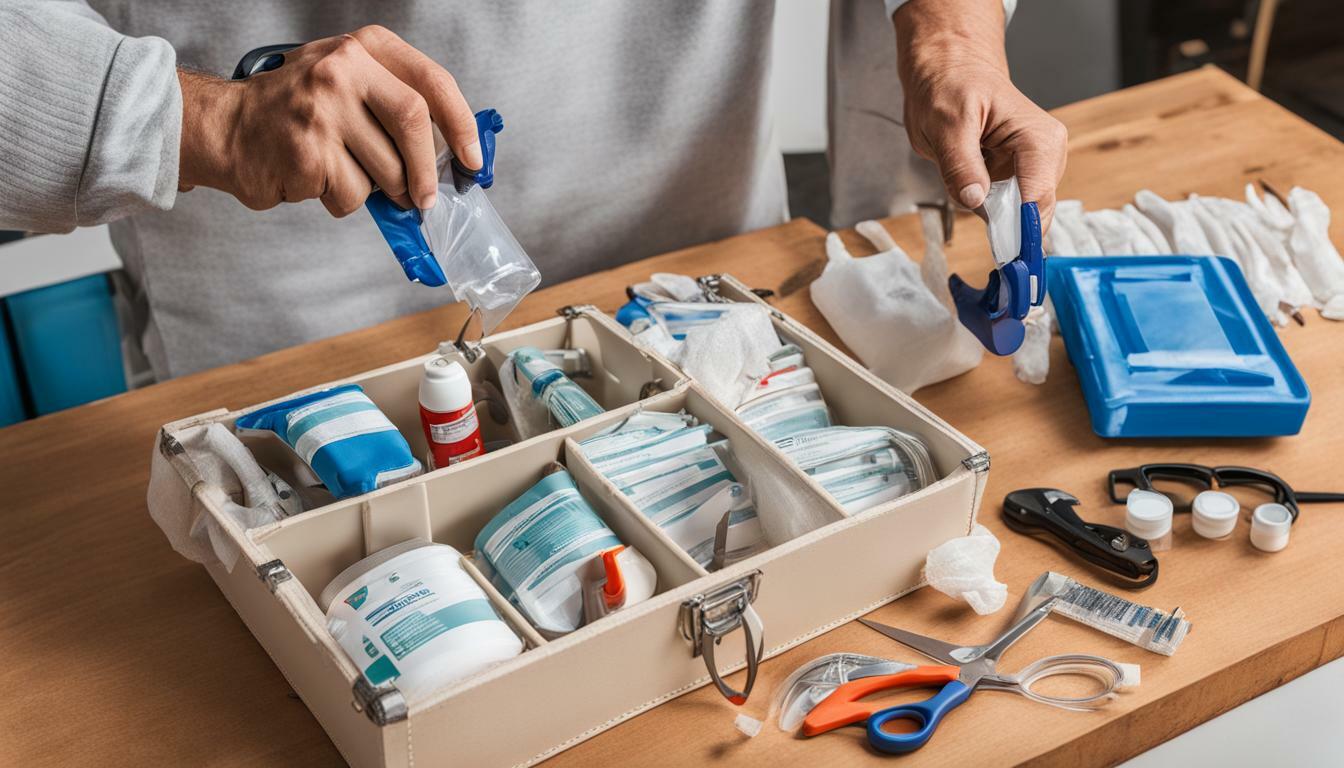
Dealing with Electrical Safety in Home Renovations
Home renovations are a great way to bring new life to your living space, but it’s important to prioritize safety when you’re working with electrical equipment. Electrical hazards can cause serious injuries or even fatalities, so it’s essential to take the proper precautions.
Here are some key guidelines to keep in mind:
- Before starting any electrical work, make sure that the power is turned off and the circuit breaker is locked to prevent accidental switch-ons.
- Always wear protective gear such as rubber gloves, non-conductive shoes and safety glasses when working with electrical equipment.
- Be sure to use appropriate tools and extension cords that are rated for the job you are doing.
- Never touch electrical equipment with wet hands or feet, and avoid working in wet or damp areas.
- Regularly inspect your electrical tools and cords for fraying, wear and tear. Replace or repair any damaged equipment as soon as possible.
If you’re unsure about how to handle electrical equipment or if you have any concerns about the safety of your wiring, it’s always best to consult with a licensed electrician.
By following these guidelines and being proactive about safety, you can help ensure a successful and safe outcome for all your home renovations and DIY projects.
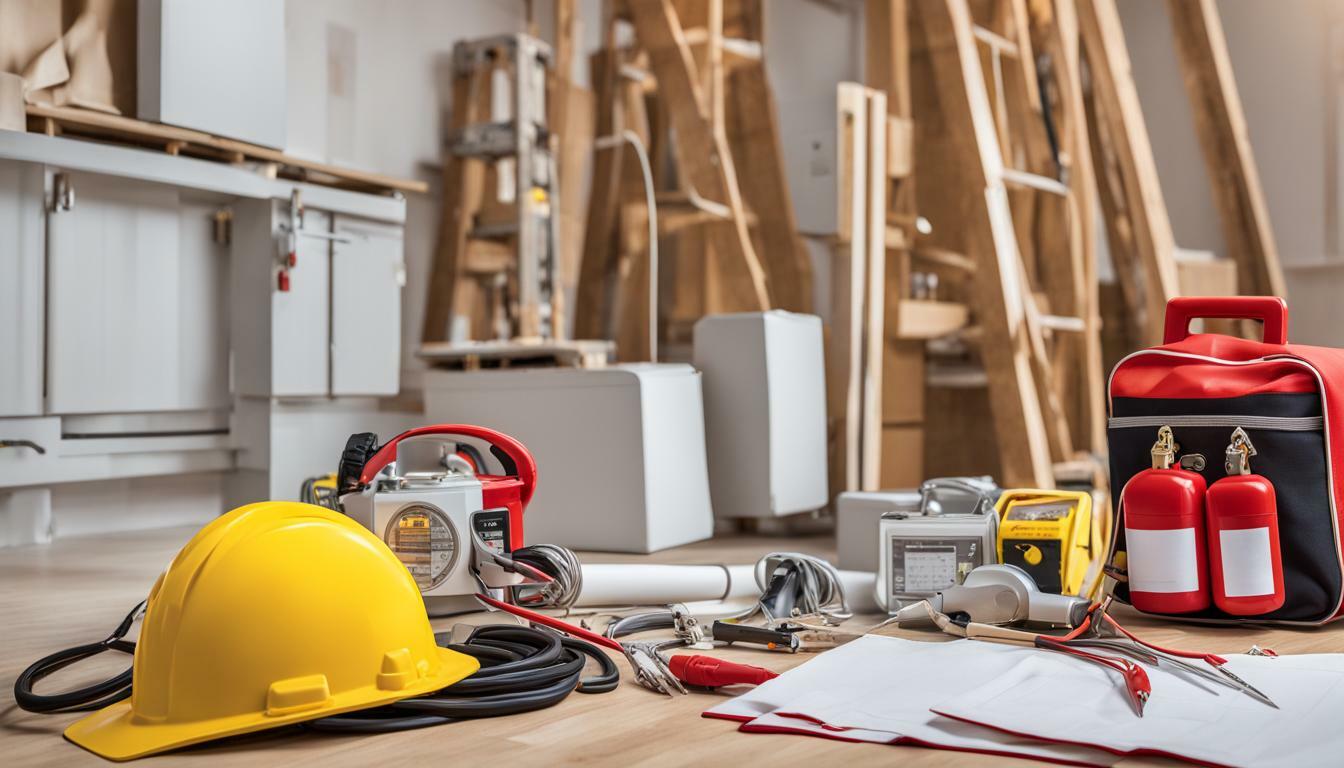
Safety Measures for Working with Tools and Equipment
When embarking on DIY projects or home renovations, safety should always be a top priority. One of the most important safety considerations is how to properly work with tools and equipment. Here are some tips to keep in mind to prevent accidents and promote injury prevention:
1. Use tools for their intended purpose
Tools are designed for specific purposes, and using them in unintended ways can lead to serious injury. Always use the right tool for the job and ensure it is in good working condition before use.
2. Wear appropriate safety gear
When using tools and equipment, it is important to wear the proper safety gear, such as goggles, gloves, and ear protection. This can protect you from flying debris, loud noises, and other potential hazards.
3. Keep work areas clean and well-lit
A clean and well-lit work area can help promote injury prevention by reducing the risk of slips, trips, and falls. Ensure your work area is free of clutter, and use proper lighting to ensure visibility.
4. Secure loose objects
Loose objects such as cords and materials can create tripping hazards or become caught in machinery. Always keep these objects secured and out of the way to prevent accidents.
5. Maintain a safe working environment
Make sure your workspace is well-organized and free of potential hazards. This can include locking up sharp tools, properly storing flammable materials, and keeping machinery in good working order.
6. Seek professional help when needed
Not all DIY projects or home renovations should be completed on your own. If you are unsure about a task or don’t have the necessary training, seek professional help. Prioritizing safety over completing a project quickly can prevent injuries and promote injury prevention.
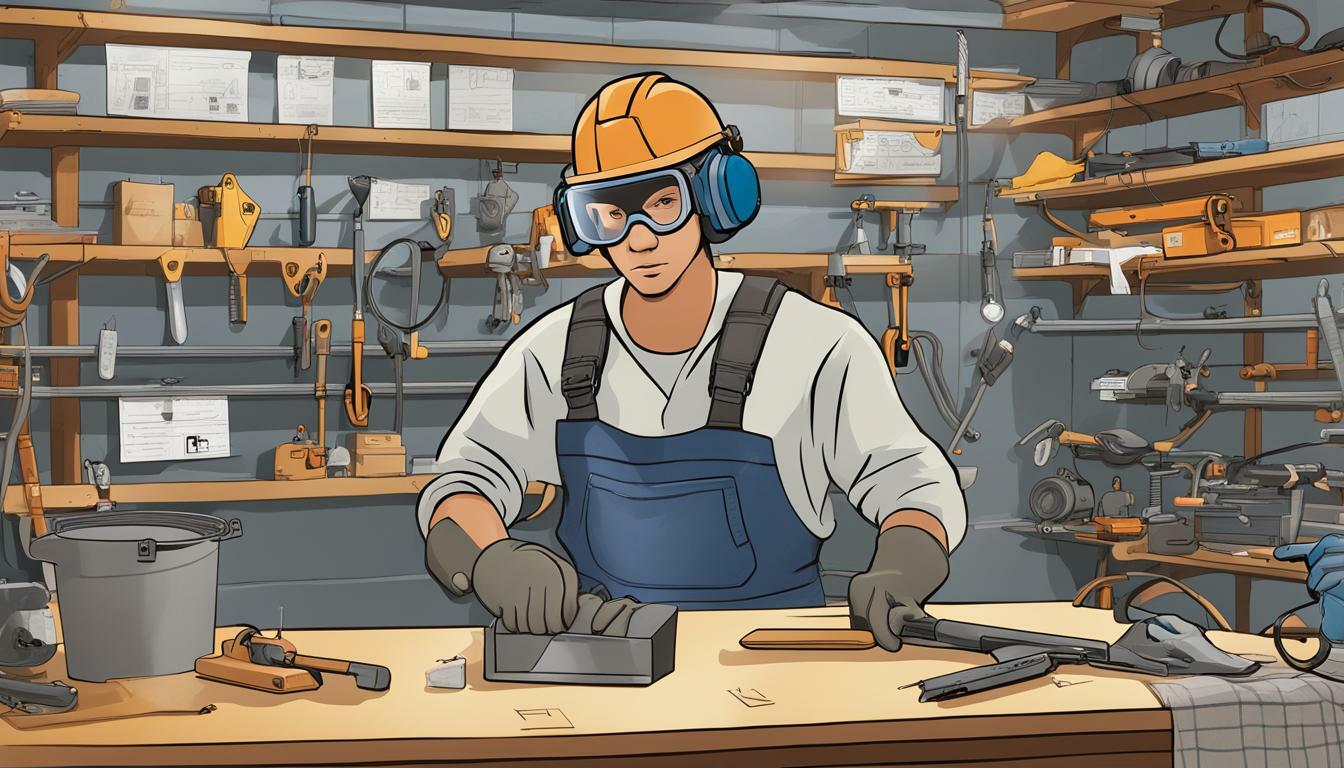
By following these safety measures, you can promote injury prevention and ensure that your DIY projects and home renovations are completed safely and successfully. Remember, taking the time to prioritize safety can ultimately save time and prevent accidents.
Managing Chemical Hazards in Home Renovations
Home renovations are a great way to refresh your living space and increase your property value. But, working with chemicals during these projects poses several risks that can be harmful to your health and safety. That’s why it’s important to be aware of potential chemical hazards and take precautionary measures to prevent accidents.
Chemical hazards can range from minor irritation to severe burns and respiratory problems. You can avoid these hazards by staying informed and being prepared with a well-stocked first aid kit.
Here are some guidelines to help you manage chemical hazards during home renovations and DIY projects:
| 1. Read Labels Carefully | Before using any chemical, make sure you read the label carefully. This will give you information on potential hazards, safety precautions, and first aid measures in case of an emergency. |
|---|---|
| 2. Use Protective Clothing and Gear | Wear protective clothing such as gloves, goggles, and a face mask when handling chemicals. This will help prevent any accidental contact with your skin or eyes. |
| 3. Ensure Proper Ventilation | Chemical fumes can be harmful to your health if inhaled. Make sure there is proper ventilation in the area you are working in to prevent the accumulation of fumes. |
| 4. Store Chemicals Properly | Keep all chemicals stored in a cool, dry location and away from sources of heat or flames. Proper storage helps prevent accidental spills or fires. |
| 5. Dispose of Chemicals Safely | Never pour chemicals down the drain or throw them in the trash. Instead, follow the instructions on the label for proper disposal. |
By following these guidelines, you can minimize the risk of accidents and keep yourself and your family safe during home renovations. Remember to always prioritize safety and seek professional help if you are unsure about how to handle any chemicals.
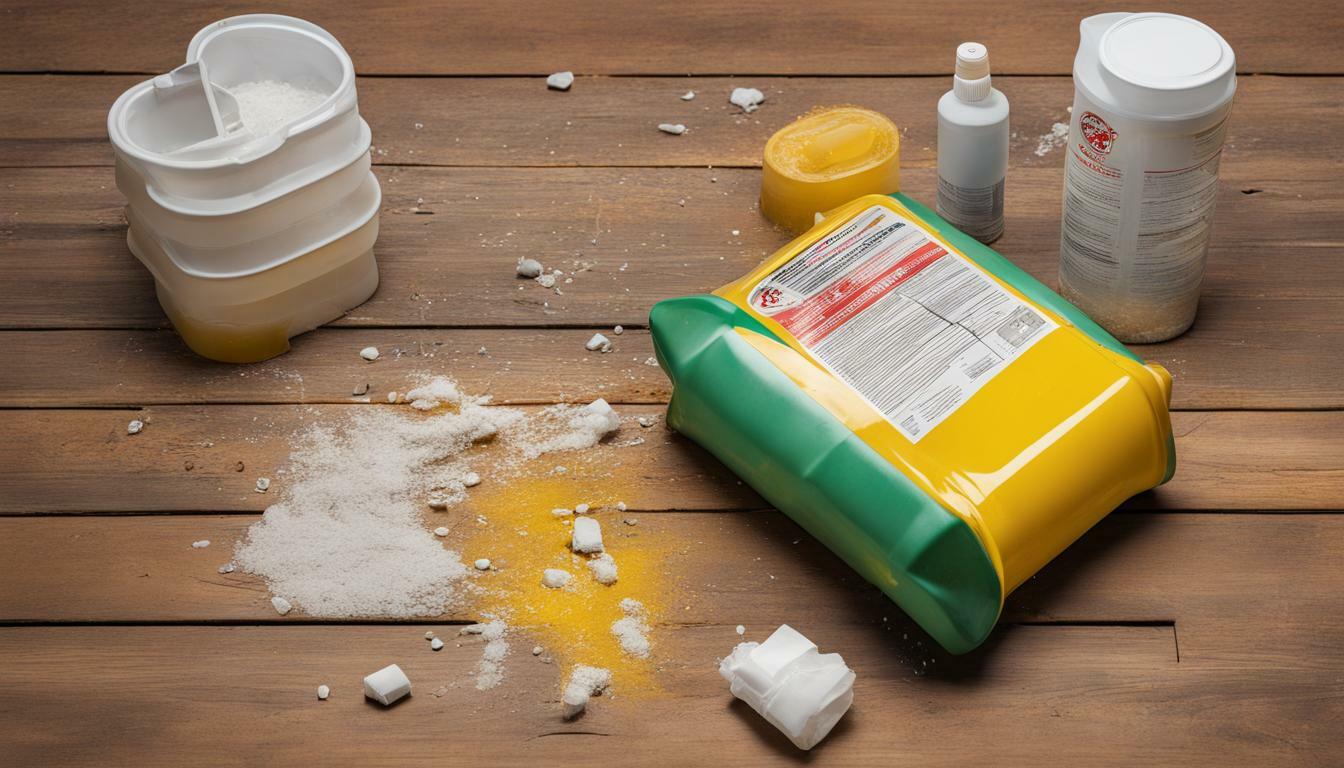
First Aid Kit Essentials for Outdoor DIY Projects
When it comes to outdoor DIY projects, there are additional safety concerns that need to be addressed. Being prepared with a well-stocked first aid kit is essential for any outdoor project, especially in remote locations where medical assistance may not be easily accessible.
Here are some first aid kit essentials to consider when working on outdoor DIY projects:
| Item | Purpose |
|---|---|
| Tweezers | To remove splinters or thorns |
| Sunscreen | To protect skin from harmful UV rays |
| Insect repellent | To prevent mosquito, tick, and other insect bites |
| Survival blanket | To provide warmth in case of exposure to cold temperatures |
| Tourniquet | To prevent severe bleeding in case of a major injury |
| Instant cold pack | To reduce swelling and pain from sprains and strains |
It’s also a good idea to bring along a basic first aid manual and a fully charged mobile phone in case of emergencies. Make sure to let someone know where you will be and when you plan to return, in case you need assistance.
Don’t let unexpected accidents ruin your outdoor DIY project. With a well-stocked first aid kit and emergency preparedness, you can ensure a safer and more enjoyable experience.
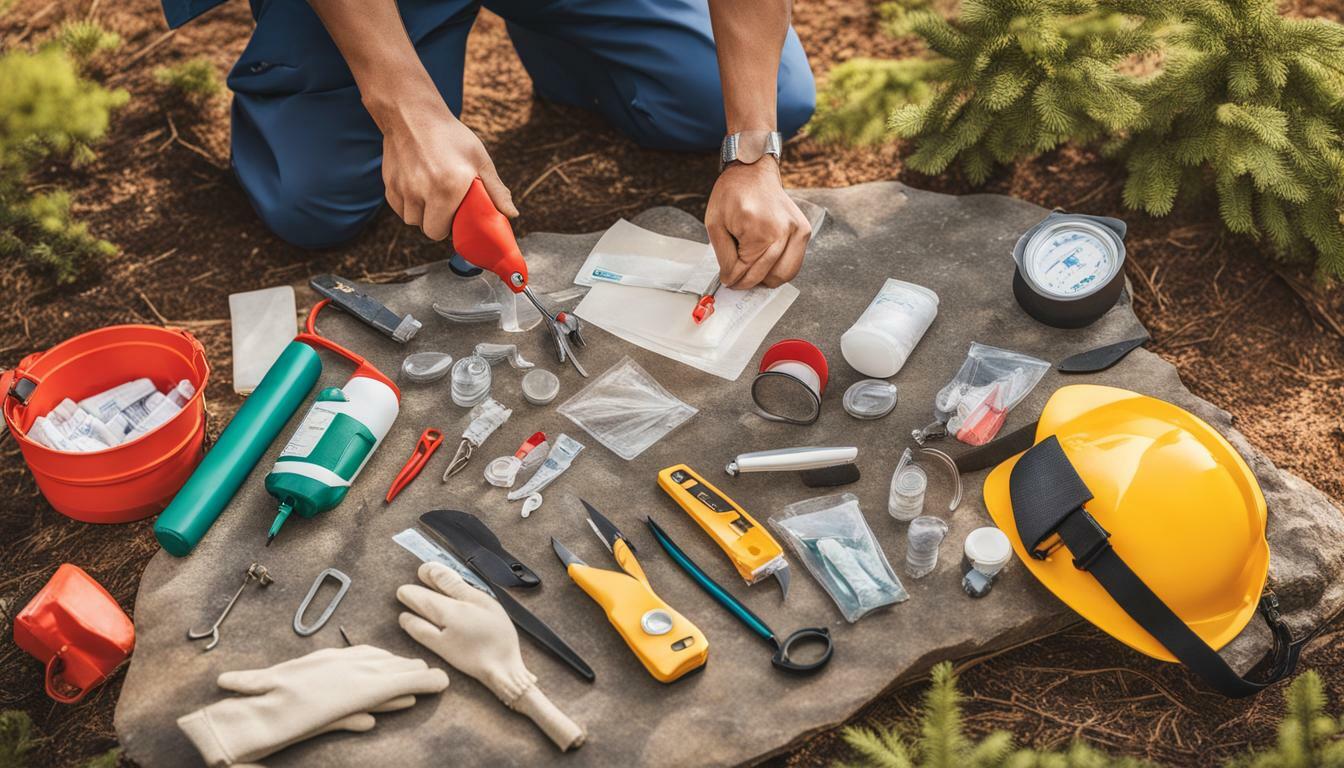
Creating a Safe Working Environment
When it comes to completing DIY projects at home, creating a safe working environment should be a top priority. Taking the necessary steps to ensure home safety can help prevent injuries and accidents. To help you get started, here are some tips for creating a safe working environment:
- Declutter the work area: Remove any unnecessary items from the workspace to prevent tripping hazards or obstacles.
- Maintain good lighting: Ensure there is adequate lighting in the area to avoid accidents that may result from poor visibility.
- Secure loose objects: Make sure that all objects are securely fastened to prevent them from falling or tipping over during your project.
By following these simple tips, you can create a safe working environment that will help reduce the risk of accidents and injuries. Remember to prioritize home safety when completing any DIY project.
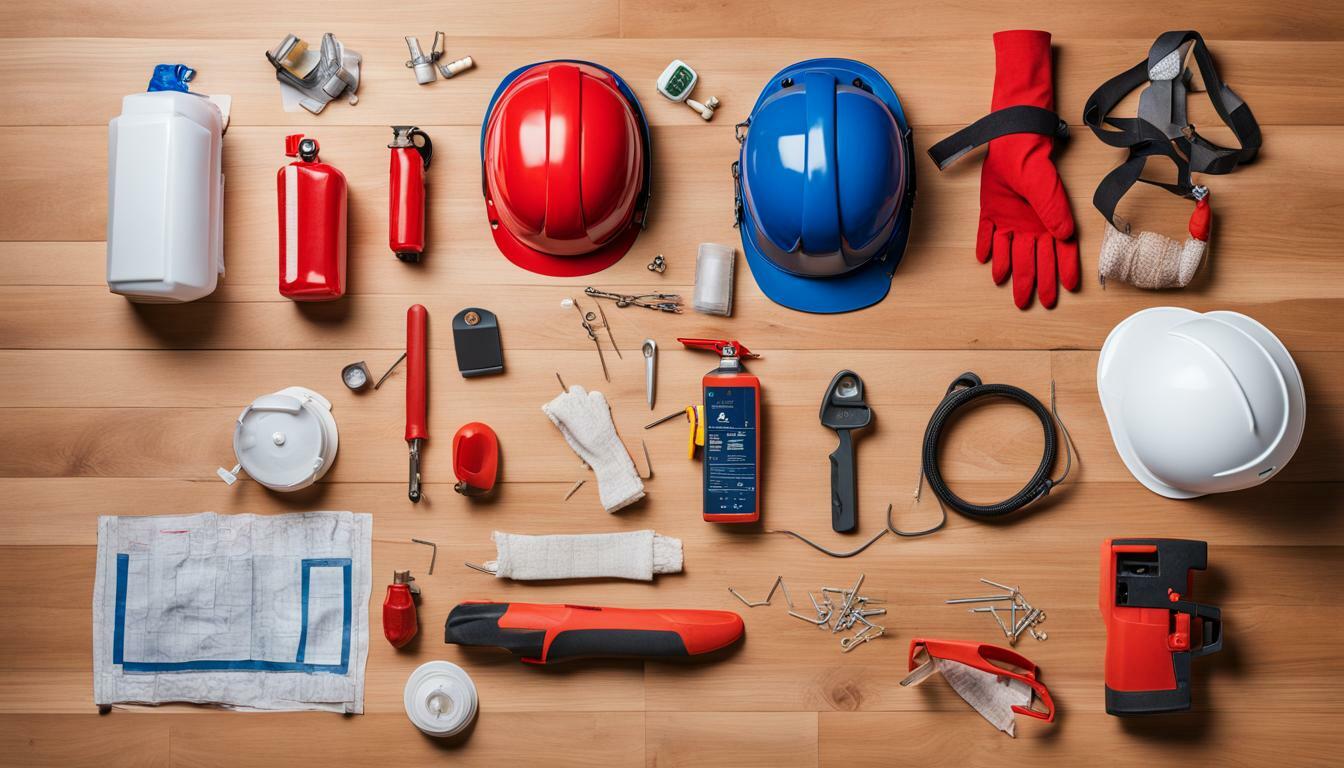
Knowing When to Seek Professional Help
Undertaking DIY projects or home renovations can be empowering and save money, but it’s essential to know when to seek professional help. While many tasks can be completed safely with the right knowledge and tools, some require the expertise of a trained professional.
For instance, projects involving electrical wiring, plumbing, or structural changes should be left to licensed professionals. Attempting such tasks without the necessary experience can lead to serious injury or even death. Therefore, it’s crucial to assess the complexity of the task and one’s skill level before taking on such projects.
Prioritizing safety is essential in DIY projects and home renovations. When attempting tasks or using equipment with a high risk of injury, it’s important to have a first responder nearby or another person who can help in an emergency.
If an accident does occur, it’s important to know when to seek professional medical help. While minor injuries such as small cuts or bruises can be treated at home, severe injuries such as broken bones, head injuries, or deep wounds require immediate medical attention. It’s essential to recognize when an injury is beyond one’s capability to manage and seek professional help.
Keeping in mind these injury prevention and first aid tips can go a long way in ensuring a safe and successful DIY project or home renovation. Remember to prioritize safety, seek professional help when necessary, and enjoy the satisfaction of completing a project while staying safe.
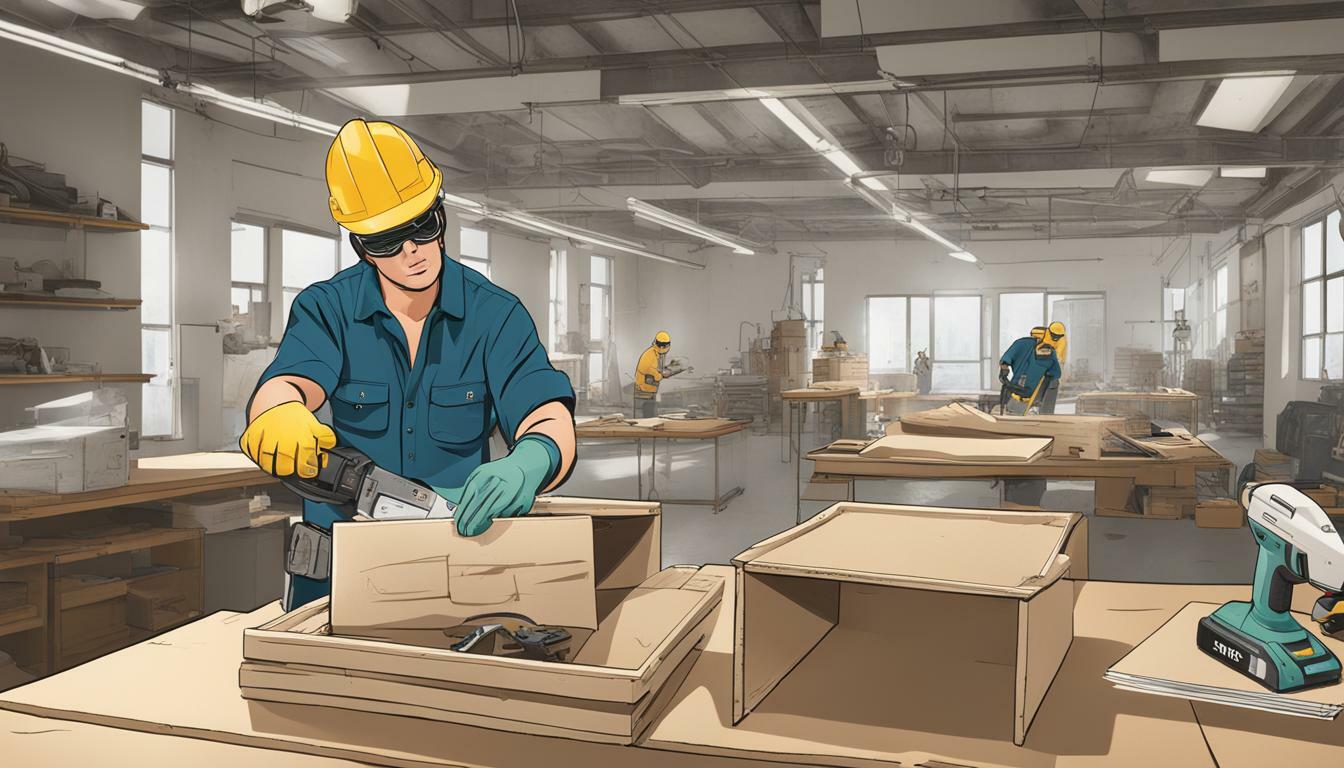
Staying Updated on First Aid Techniques
When it comes to DIY safety, having the right first aid supplies is crucial. However, it’s equally important to have the knowledge and skills to use those supplies effectively. One of the best ways to ensure you’re prepared for any potential mishaps is to stay updated on first aid techniques. Here are some tips for doing so:
- Take a first aid course: The most effective way to learn first aid techniques is by taking a course. Look for local courses offered by organisations like the Red Cross or St John Ambulance.
- Refresh your knowledge regularly: Even if you’ve taken a first aid course before, it’s important to brush up on your skills regularly. Consider taking a refresher course every few years.
- Read up on first aid techniques: There are plenty of books and online resources that can help you learn and refresh your knowledge on first aid techniques. Look for reputable sources and avoid relying solely on anecdotal information.
- Practice: Finally, the best way to stay confident in your ability to use first aid supplies is to practice. Consider running through different scenarios with a friend or family member to ensure you know what to do in an emergency.
By staying updated on first aid techniques, you can help ensure that you’re prepared for any potential accidents that may occur during DIY projects. In addition to having the right first aid supplies, being confident in your ability to use them can make all the difference in an emergency.
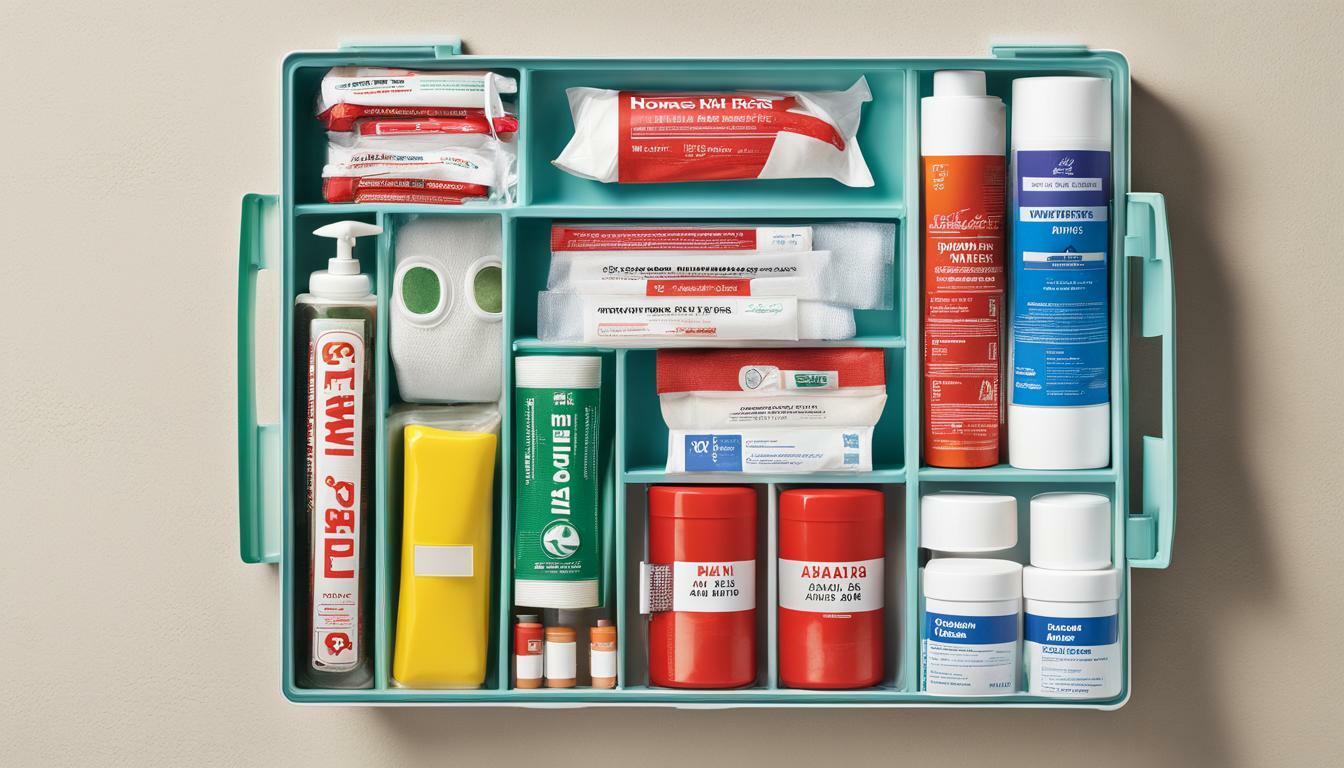
Conclusion
Home renovations and DIY projects can be exciting and rewarding, but they can also pose significant risks to our health and safety. It is essential to prioritize safety and emergency preparedness to prevent accidents and deal with them effectively when they occur.
Building a comprehensive first aid kit is crucial for any DIY project or home renovation. The kit should contain essential items such as bandages, gauzes, and antiseptics to address common injuries that may occur during these activities.
It is also essential to be aware of potential risks and hazards and take necessary precautions to prevent accidents. This includes being informed about electrical safety, using tools correctly, and managing chemical hazards. By creating a safe working environment and recognizing when professional help is needed, we can minimize the risk of accidents.
Staying updated on first aid techniques and being prepared for emergencies is also essential. Knowing what to do in case of an injury is critical, and it can make a considerable difference in the outcome.
Overall, remember to prioritize safety and be prepared for any potential accidents that may arise during your home renovation or DIY project. By following these guidelines and building a comprehensive first aid kit, you can enjoy the process while keeping yourself and your loved ones safe.
